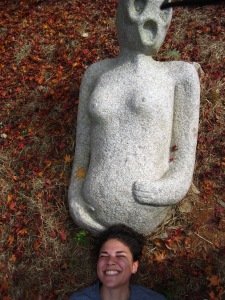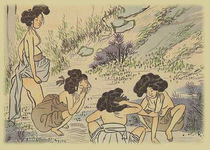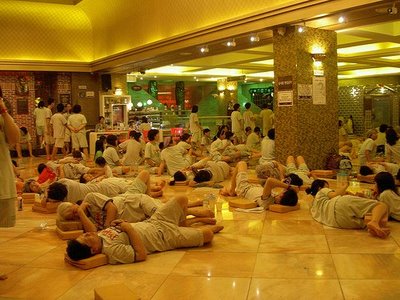(A copy of this post is also available on Chincha?!)
The homogeneity of South Korea is a topic under constant discussion amongst foreigners and natives alike, as Korea is one of the most racially homogenous countries in the world. As waygookin, we feel the effects of this statistic day in and day out, at work, on the subway, in the grocery store, or on our way to Itaewon. But if you want to forget about your differences in appearance, language, and culture, I recently discovered that skiing is one of the best ways to accomplish this! Skiing and snowboarding is incredibly popular in Korea—although the selection of high mountains and challenging trails is limited—and is pretty much identical to the skiing experiences I’ve had in the USA. But more importantly, when every person is bundled up from head to toe in layers of neon sweaters, long underwear and snow pants, nobody can really detect that you are a foreigner up on the mountain.
This past weekend, I visited the Yong Pyong Ski Resort located in Pyeongchang, Gangwan-do, the northeastern province of South Korea. One of Korea’s biggest ski resorts, the mountain is 700m (2,296ft) high and 200km (124mi) from Seoul, the perfect amount for an easy weekend getaway. Travelling with a tour group geared towards foreigners (read: English teachers) called “WINK: When In Korea,” we were able to get discounted lift tickets and ski rentals, totaling ₩56,000 (from ₩63,000), and ski jacket and pants rentals were available for ₩25,000.  For roundtrip bus tickets from a central location in Seoul, hearty dinner, and 2 nights in a comfortable hostel, WINK charges ₩85,000. In total, for 1½ days of skiing (waking up at 7am Sunday morning just didn’t feel appealing at the time), rented skis and ski pants, room and board, transportation, new ski gloves, and lots of hot chocolate, I spent about ₩250,000; a reasonable price for a fantastic weekend trip. WINK was a good group to travel with overall, and you can find more information about their company on Facebook.
For roundtrip bus tickets from a central location in Seoul, hearty dinner, and 2 nights in a comfortable hostel, WINK charges ₩85,000. In total, for 1½ days of skiing (waking up at 7am Sunday morning just didn’t feel appealing at the time), rented skis and ski pants, room and board, transportation, new ski gloves, and lots of hot chocolate, I spent about ₩250,000; a reasonable price for a fantastic weekend trip. WINK was a good group to travel with overall, and you can find more information about their company on Facebook.
As I mentioned earlier, if you happen to be an expert skier, you will be disappointed by the lack of moguls, challenging trails, and off-trail skiing on the slopes at Yong Pyong (and, from what I understand, every other mountain in the country). But, if you are looking to improve your skiing ego—your “ski-go” if you will—South Korea is certainly the place to do it. The trails labeled as black diamonds at Yong Pyong would definitely be considered greens in the resorts I’ve visited in Colorado, Wyoming, and Utah. The most difficult aspect was attempting to navigate the extremely icy conditions, which were probably a result of the artificial snow that covered the mountains.
As a skier, I was also plagued by the constant annoyance of snowboarders and even worse, beginner snowboarders, who lacked any sense of mountain etiquette. Taking massive turns across the entire width of the trail, constantly falling and sitting on their bums for extended periods of time, and even taking cigarette breaks with their friends in the middle of the skiing area—I felt like a grumpy old man crashing a teenage house party. I’m actually convinced that many of these newbie snowboarders have taken on this hobby in order to take advantage of the bold, chromatic Korean fashion sense that has transcended climates and altitudes.
But, despite these minor annoyances, the Korean skiing experience is not one to miss out on. After all, don’t you want to be able to say you’ve skied on trails that will be used in the 2018 Winter Olympics? Many trails in Yong Pyong will be utilized for the skiing events. As a foreigner, there are myriad companies catering to your price range and logistical needs, take advantage of them while you can.


























